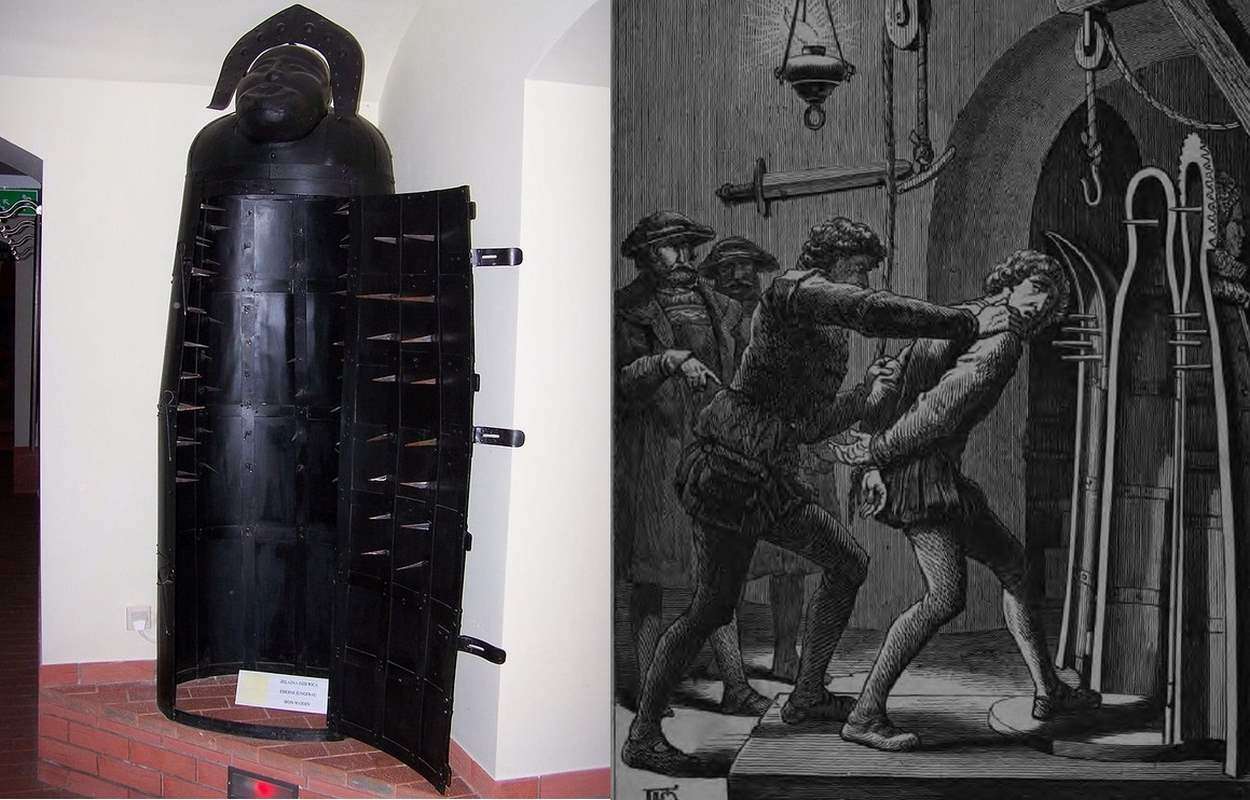Researchers Harness Sunlight to Produce Both Power and Food-Using Light to Improve Each Harvest
By filtering the blue light, these translucent solar panels generate energy while saving the crops below from heat stress and water loss.

(Note: Children or sensitive individuals should avoid this article.)
Across Europe, it's not uncommon to find museums of torture stocked with black cast iron pieces of the most unimaginable cruelty.
However a clever internet snoop and aspiring historian Spencer McDaniel presents the case that several of the most famous torture devices were actually invented in the 19th century by con men and hucksters looking to make a buck off tourists.
McDaniel focuses her analysis on a Buzzfeed video entitled "5 Of The Most Gruesome Medieval Torture Devices," and proves that only one likely even existed in the Middle Ages, and was rarely used in any case.
This is not to say that our European ancestors weren't capable of terrible cruelty, but the mechanical nature of these so-called Medieval Torture Devices implies that there were people who spent months thinking about the most revolting methods of pain infliction.
The torture devices they did use weren't really devices at all, and they were more for executions than for torture. Furthermore, they carry the hallmarks of hot-blood cruelty rather than cold-blood, as in, they tended to use whatever was easily available such as fire or horses.
The first device which McDaniel tackles is called "The Brazen Bull" which was allegedly a large bronze bull statue with a compartment wherein could be placed the victim. Underneath a fire would be kindled until it burned the victim alive, whose screams would sound like a bull bellow resonating out through the statue's nose and mouth.
This was allegedly used by a Greek tyrant Phalaris of Akragas in 570 BCE. But despite its depictions during the Renaissance, no such device has ever been found. One was referenced by a lyrical poet of all people (because they've never lies), who lived decades after Phalaris' death. The only other reference was from Greek historian Diodorus Sikeliotes nearly 500 years after Phalaris' death.
Other more iconic devices such as the "iron maiden," and "pear of anguish" have histories replete with frauds. As to the former, historians living in the 18th century were able to ascertain that an iron maiden-a sort of vertical sarcophagus filled with spikes-was fraudulent, when it was reported from Nuremberg, Germany that in 1515 it was used to execute a coin forger.
Iron maidens showcased in museums today were all built long after the historical record was well-illuminated, and no case of them ever having been used in the Middle Ages, nor of an individual device built from that time, has come down to us.
The "pear of anguish" was supposedly a sort of pear-shaped metal object that when inserted into an orifice could be expanded outward via a screw, causing horrible pain. The oldest surviving account of this being used was from the 18th century by a Parisian criminal-not exactly an organ of law and order, and certainly not Medieval.
McDaniel also claims that the mechanical features of those found in museums would not have worked the way they were supposed to anyway.
The last instrument she mentions probably arose from someone's imagination of the burnings during the Inquisition, but as she details "the Spanish Tickler" was invented during our own lifetimes by torture-focused con men on the internet, who wanted to purpose that a kind of rake was used to remove the flesh of victims as leaves might be piled up in autum.
"The so-called ‘Spanish tickler' was totally made up on 15 December 2005 by a Wikipedia editor with the username ‘Andyok,'" writes McDaniels. "The hoax article… was ultimately discovered by responsible Wikipedia editors on 2 March 2018 and has now been deleted."
While this seems to be a slightly frivolous rabbit hole of disproving already hard-to-imagine things, one commenter on McDaniels' work reveals its value.
"Inhumane medieval torture devices depicted by the media such as the pear and the iron maiden upset and haunted me greatly since childhood, as I could not help but vividly imagine the victims' agony. You have finally lifted my nightmares and restored some humanity in the Medieval era for me! Thank you!"
McDaniels reminds the commenter there was definitely torture during the Medieval period, but concurrent to what's written above, they tended to involve readily available materials and were more methods of execution than torture.
HELP Restore Your Friends' Faith In The Medieval Era With This Story…
Be the first to comment